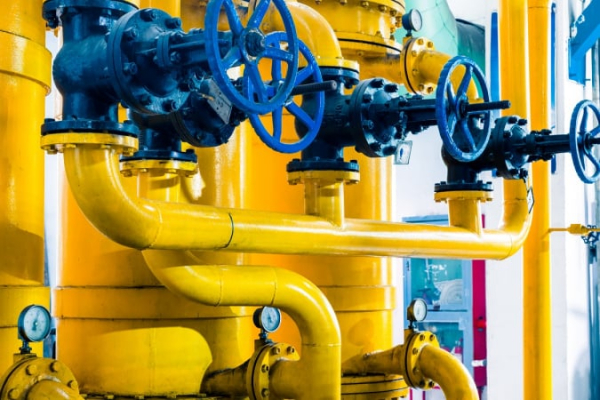The European Union will have sufficient gas reserves next winter, and Central European countries that still buy Russian pipeline gas are working on alternative imports in case transit through Ukraine stops from January. This is reported by Reuters with a link to analysts and companies.

► Read the Ministry of Finance on Instagram: the main news about investments and finance
Gas prices in Europe fell to levels seen before Russia's invasion of Ukraine in February 2022, reaching a three-year low in February as warm weather and high electricity production from renewable sources reduced demand for gas and reduced the need to withdraw it from storage.< /p>However, the agreement signed in 2019 between the Ukrainian NJSC Naftogaz and the Russian Gazprom, allowing Russian gas to flow through Ukraine, expires at the end of the year, raising new concerns about possible interruptions in gas supplies to Europe.
Filling gas storage facilities
According to Gas Infrastructure Europe, a few days before the end of the winter gas season in Europe, which ends on March 31, Europe's gas storage facilities are 59% full – a record for this time of year.
“Europe is on track for another record early summer inventory level, and the continent looks set to fill its storage capacity early again (next winter),” said James Weddell, head of European gas and global LNG at consultancy Energy Aspects.
According to EU directives established after Russia's full-scale invasion of Ukraine, Europe's gas storage facilities must be 90% full on November 1.
Gas reserves in storage typically account for about a quarter of winter gas consumption in Europe, where it is the main heating fuel, and high reserves should provide Europe with enough gas next winter and avoid significant price shocks.
Most vulnerable countries
The EU's most vulnerable countries are Austria and Slovakia, as they still import much of their gas from Russia via Ukraine, but even they say they are working on new sources of supply to limit the impact , if supplies are interrupted.
In 2024, Gazprom typically transported about 40 million cubic meters of gas per day via transit routes through Ukraine, which, if gas supplies continued, would amount to an annual rate of 14 billion cubic meters, or approximately 3.5 % of total EU demand.
Approximately half of this gas reaches Austria via pipelines through Ukraine and then to Slovakia. Austrian energy company OMV said it had prepared for scenarios in which Russian gas supplies would be interrupted.
Slovakia's SPP, which also receives Russian gas through Ukraine, said it was constantly assessing gas market developments and available options.< /p>
